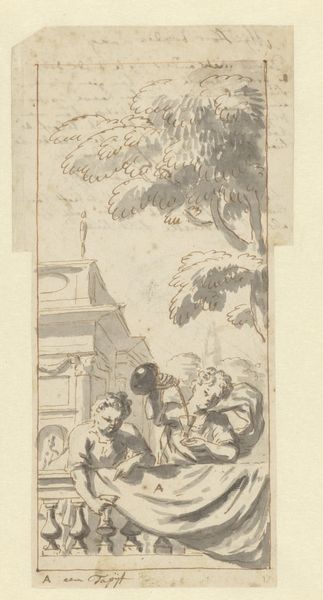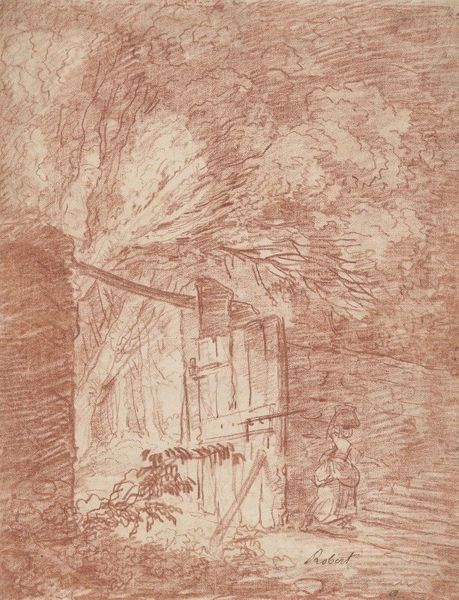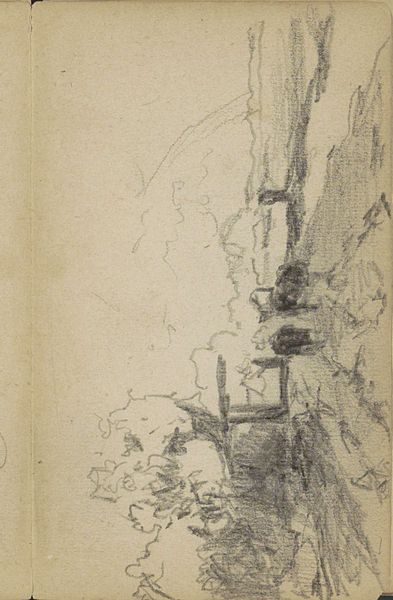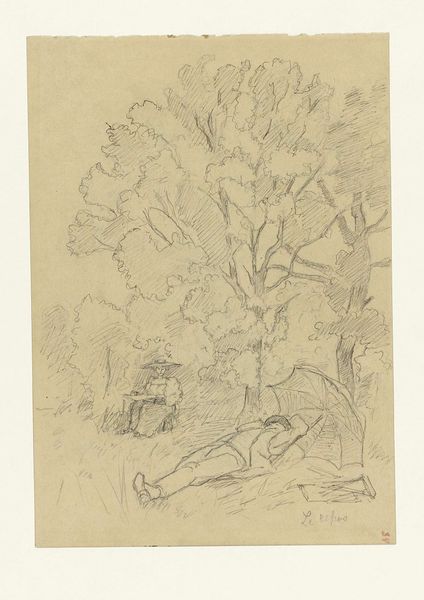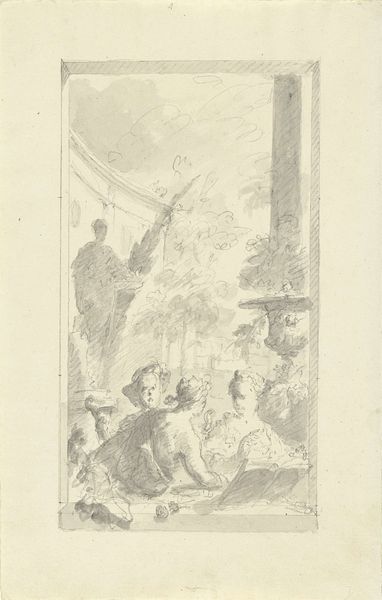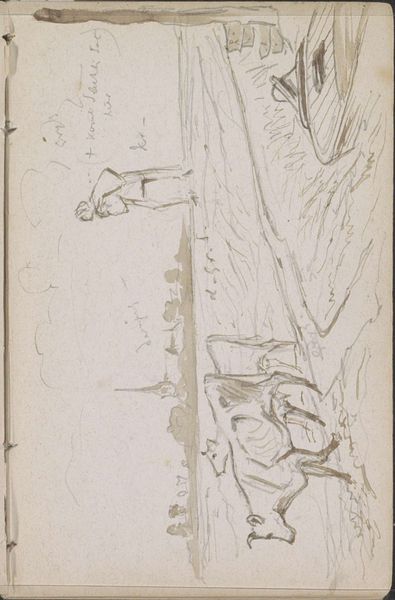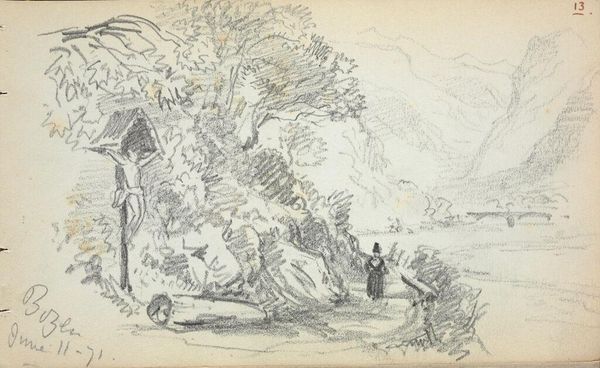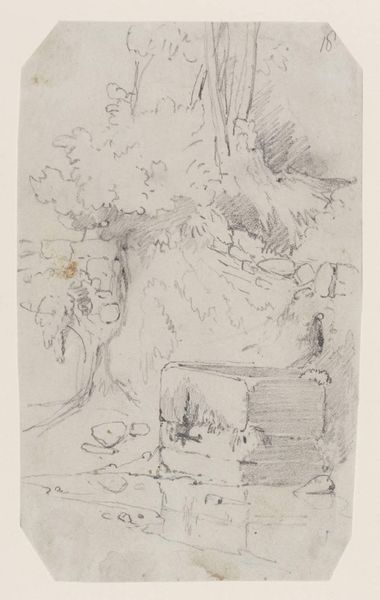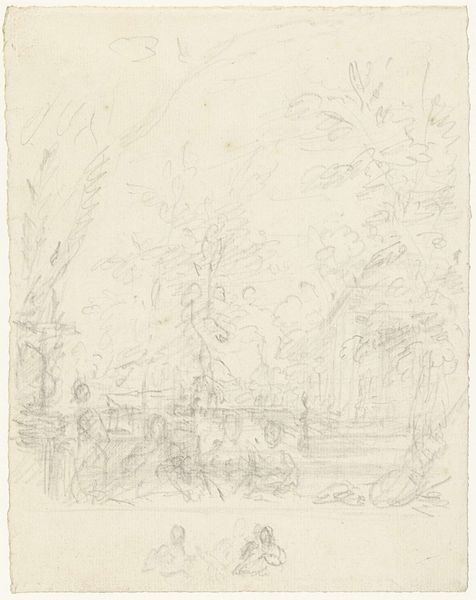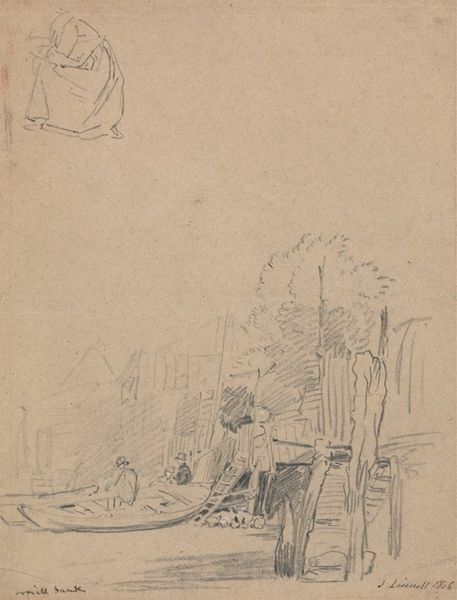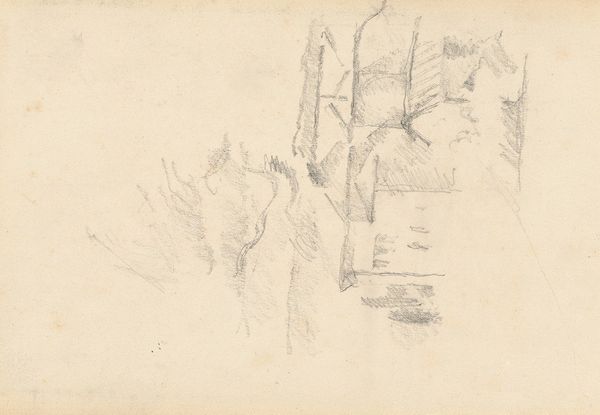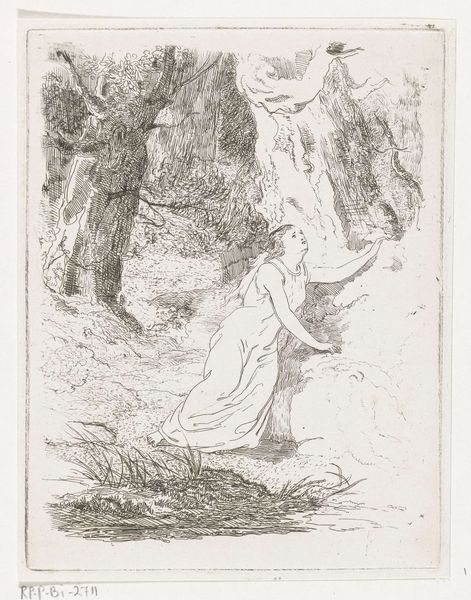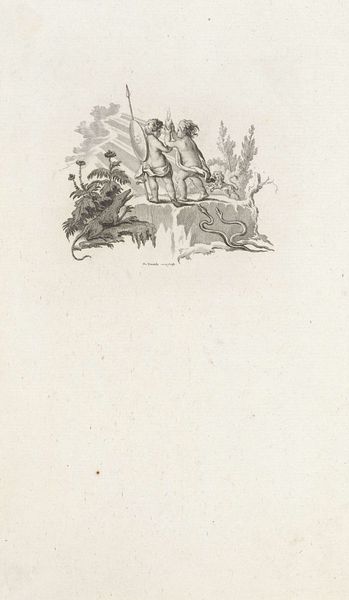
drawing, pencil
#
drawing
#
pen sketch
#
landscape
#
figuration
#
pencil
#
genre-painting
#
rococo
Dimensions: height 330 mm, width 207 mm
Copyright: Rijks Museum: Open Domain
Editor: Here we have Dionys van Nijmegen's 1756 piece, "Ontwerp voor een zaalstuk: twee vrouwen voor een landschap," rendered in pencil and drawing. The Rococo style gives it a light, airy feel, almost dreamlike. I'm curious, what catches your eye about this piece? Curator: Immediately, the process behind this work as a "zaalstuk," or salon piece, interests me. This wasn't created in a vacuum; it was intended to adorn a domestic interior, influencing the lives, labor, and consumption patterns of those who occupied the space. What can you discern about the materials and techniques employed here? Editor: I notice the varied use of the pencil, creating light and shadow, and it looks like there is a sort of ink wash. What does this imply for its intended audience? Was this the average patron, or did it target an upper class? Curator: Precisely. Consider the labour invested in materials. Pencils weren't mass-produced. The paper, ink and level of draughtsmanship would have only been available to a segment of society, who often sought to emulate the aristocratic lifestyle. Does the sketch itself seem preparatory to you, hinting at a larger commission? Editor: Yes, you're right. It does have that initial study feel to it. Perhaps it reveals something about the commodification of leisure during the Rococo period – the idealized landscape serving as a backdrop for privileged pastimes. It really reframes how I view it! Curator: Indeed. By looking at this 'simple' sketch, we have actually unpacked layers of historical production, socioeconomic stratification and material ambition tied into this work. What will you take away from this discussion? Editor: I'll definitely be thinking more about how material constraints can actually inform our understanding of an artwork's broader cultural impact and legacy, moving forward. Thank you!
Comments
No comments
Be the first to comment and join the conversation on the ultimate creative platform.
